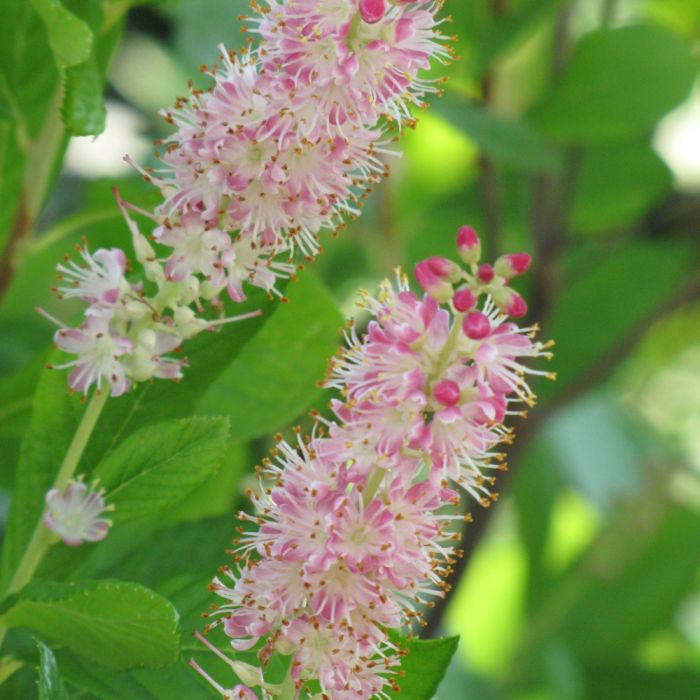Clethera, Summersweet 'Ruby Spice'




- Sun Preference
- Full-Sun, Part-Sun
Description
One of the most fragrant of all garden shrubs with showy spikes of sweetly scented deep pink flowers bloom in late summer when little else is in flower; a very hardy variety, neat, tidy habit of growth and good fall color; needs moist acidic soil.
Minnesota's Largest Selection of Shrubs
Elevate your landscaping with Gertens' unmatched variety of shrubs! Selecting the right shrubs for your backyard can enhance its beauty and functionality. Consider factors like sunlight, soil type, and mature size when choosing shrubs. For sunny areas, flowering shrubs like roses or hydrangeas can add color and charm. In shady spots, opt for shrubs like azaleas or hostas. Evergreen shrubs provide year-round interest and privacy, while deciduous shrubs offer seasonal color changes. At Gertens, we offer a wide selection of shrubs to suit every backyard need.
Details
Height: 5 feet
Spread: 5 feet
Sunlight:![]()
![]()
Hardiness Zone: 4a
Other Names: Sweet Pepperbush
Description:
One of the most fragrant of all garden shrubs with showy spikes of sweetly scented deep pink flowers bloom in late summer when little else is in flower; a very hardy variety, neat, tidy habit of growth and good fall color; needs moist acidic soil
Ornamental Features
Ruby Spice Summersweet has masses of beautiful spikes of fragrant ruby-red flowers rising above the foliage from mid to late summer, which are most effective when planted in groupings. It has green foliage throughout the season. The glossy round leaves turn an outstanding harvest gold in the fall. The fruit is not ornamentally significant.
Landscape Attributes
Ruby Spice Summersweet is a multi-stemmed deciduous shrub with a shapely oval form. Its average texture blends into the landscape, but can be balanced by one or two finer or coarser trees or shrubs for an effective composition.
This shrub will require occasional maintenance and upkeep, and is best pruned in late winter once the threat of extreme cold has passed. It is a good choice for attracting bees and butterflies to your yard. Gardeners should be aware of the following characteristic(s) that may warrant special consideration;
- Suckering
Ruby Spice Summersweet is recommended for the following landscape applications;
- Mass Planting
- General Garden Use
- Naturalizing And Woodland Gardens
Planting & Growing
Ruby Spice Summersweet will grow to be about 5 feet tall at maturity, with a spread of 5 feet. It tends to fill out right to the ground and therefore doesn't necessarily require facer plants in front, and is suitable for planting under power lines. It grows at a slow rate, and under ideal conditions can be expected to live for approximately 30 years.
This shrub does best in full sun to partial shade. It is quite adaptable, prefering to grow in average to wet conditions, and will even tolerate some standing water. It is not particular as to soil type, but has a definite preference for acidic soils, and is able to handle environmental salt. It is highly tolerant of urban pollution and will even thrive in inner city environments. Consider applying a thick mulch around the root zone in winter to protect it in exposed locations or colder microclimates. This is a selection of a native North American species.
| SKU | Container Size |
| S0850 | #2 Container (2 Gallon) |
| S0852 | #5 Container (5 Gallon) |
* Not all container sizes may be available at this time. See store for details on specific container size availability.
More Information
| Gerten Grown Plants | Gerten Grown Plants |
|---|---|
| Sun Preference | Full-Sun, Part-Sun |
| Mature Height (Range) | 2 - 5 feet |
| USDA Hardiness Zone | 4, 5, 6, 7, 8, 9 |
| Common Family Name | Summersweet |


